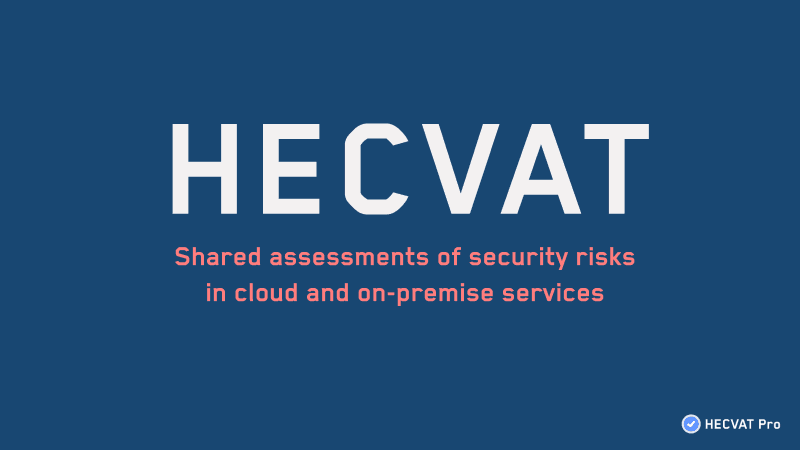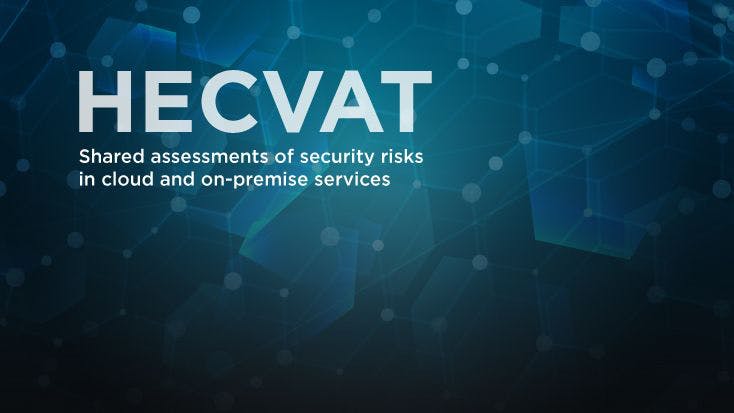Table of Contents
ToggleMaximizing Cybersecurity: HECVAT Success Strategies
In cybersecurity, standing out and staying ahead demands a strategic approach to utilizing the Higher Education Community Vendor Assessment Toolkit (HECVATPro). As the fight against cyber threats becomes increasingly complex, educational institutions and their partners are seeking effective ways to safeguard their digital frontiers. This article delves into the essential strategies for HECVATPro success, drawing inspiration from the insights available on HECVATPro and its commitment to accessibility (Accessibility Statement) to ensure that these strategies are inclusive and applicable to a broad audience.
Table 1: Understanding HECVAT’s Core Objectives
| Objective | Description | Impact on Institutions |
|---|---|---|
| Risk Assessment | Facilitate a comprehensive evaluation of potential cybersecurity threats. | Enables tailored risk management strategies. |
| Vendor Compliance | Ensure third-party vendors meet security standards. | Mitigates risks associated with external partnerships. |
| Data Protection | Prioritize the safeguarding of sensitive information. | Builds trust and complies with legal obligations. |
| Continuous Improvement | Promote ongoing assessment and enhancement of cybersecurity measures. | Fosters a culture of proactive security management. |
Leveraging HECVATPro within an institution’s cybersecurity framework offers a well-rounded approach to addressing the myriad challenges posed by cyber threats. The following strategies have been exclusively curated to guide institutions toward achieving cybersecurity excellence through HECVATPro.
HECVAT Success Strategies
1. Comprehensive Training and Awareness
Strategy Table
| Action | Objective | Outcome |
|---|---|---|
| Conduct regular HECVAT training sessions | Enhance stakeholder understanding of toolkit functionalities and applications. | A more informed team capable of effectively implementing HECVAT. |
| Utilize resources from HECVATPro for training | Access up-to-date, expert content and guidelines. | Ensures alignment with best practices in cybersecurity assessments. |
2. Collaborative Risk Management
Strategy Table
| Participants | Role | Benefit |
|---|---|---|
| IT Department | Lead in identifying and assessing cybersecurity risks. | Centralizes expertise for better risk mitigation. |
| Academic Leaders | Provide insights on critical assets and potential vulnerabilities. | Ensures comprehensive understanding of institutional priorities. |
| External Vendors | Share responsibility in safeguarding data and systems. | Enhances security through collaborative efforts. |
3. Periodic Assessment Reviews
Plan Table
| Frequency | Focus Area | Expected Outcome |
|---|---|---|
| Quarterly | Review effectiveness of current cybersecurity measures. | Identifies gaps and opportunities for improvement. |
| Annually | Conduct in-depth analysis of vendor compliance and risk exposure. | Ensures long-term alignment with HECVAT objectives and industry standards. |
4. Embrace Technological Advancements
Integration Table
| Technology | Application | Advantage |
|---|---|---|
| AI and Machine Learning | Analyze data to predict potential security breaches. | Proactive threat detection and response. |
| Blockchain | Secure sensitive data exchanges. | Enhanced data integrity and traceability. |
5. Accessible and Inclusive HECVAT Implementations
Ensuring that the implementation of HECVATPro strategies is accessible to all staff members, including those with disabilities, is not just a legal requirement but a moral imperative. Drawing inspiration from the Accessibility Statement provided by HECVATPro, we emphasize the importance of including accessibility considerations in every step of the cybersecurity strategy planning and execution process.
Conclusion
Cybersecurity in higher education is a daunting yet navigable challenge with the right strategies and tools. HECVAT offers a robust framework for institutions to protect their digital ecosystems effectively. By focusing on comprehensive training, collaborative risk management, periodic assessments, embracing technological advancements, and ensuring accessible and inclusive implementations, institutions can enhance their cybersecurity posture significantly. Visit HECVATPro for more in-depth insights and guidance to navigate the complexities of higher education cybersecurity successfully.



